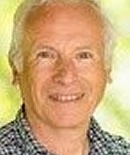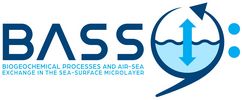
Apl. Prof. Dr. Thorsten Brinkhoff
University of Oldenburg
Principal Investigator
/ Web

Mag. Dr. Thomas Reintaler
University Vienna
Principal Investigator
/ Web

Prof. Dr. Meinhard Simon
University of Oldenburg
co-PI

Prof. Dr. Gerhard Herndl
University Vienna
co-PI

Isha Athale
University of Oldenburg
PhD-student
Dmytro Spriahailo
University Vienna
PhD-student
BASS SP 1.2
Diversity, metabolic activity and adaptation of bacteria in the seasurface microlayer
The surface of the oceans is covered by an extremely thin layer of water, the so called surface microlayer (SML), through which the exchange of substances between air and water takes place. The SML has a biofilm like structure in which specific compounds accumulate. Extreme conditions prevail at this interface, with rapid fluctuations in temperature and salinity over the course of the day. Furthermore, microbes living here are exposed to extreme stress from cell-damaging ultraviolet radiation. Generally, bacteria perform an important task in the sea because they consume, but also bind dissolved organic carbon in the cell. However, most of the carbon taken up is converted to carbon dioxide and released into the water. Depending on the stress level of the bacteria, more or less dissolved organic carbon is bound and thus bacteria can increase or decrease the concentration of climate-damaging CO2 in the sea. In addition, bacteria can change dissolved organic material in such a way that it can no longer be quickly utilized by other microbes and thus is stored in the water column for a long time. Previous research suggests that specific microbial communities live in the oceanic surface skin, some of which can withstand the harsh environmental conditions. However, we do not yet know which specific bacteria these are and whether there are genetic and physiological adaptations that allow them to survive environmental extremes relatively unscathed.
Subproject 1.2 investigates which microbial communities are present in the SML and how far they differ from those in the underlying water. We measure activity, growth rates and respiration of the bacteria under different weather conditions, to identify the influence of physico-chemical fluctuations on the bacterial communities. This strongly includes use of data from other subprojects that will help us to determine the conditions in the SML. For deeper insights in adaption of the organisms to the environmental conditions, we isolate bacteria and characterise their physiological, genomic and genetic properties. Laboratory experiments with a defined UV radiation and subsequent physiological investigations demonstrate adaptations or protective mechanisms of the organisms. We use the latest molecular tools that allow us to decode the function of genes and proteins in the bacterial communities. Our ultimate goal is to understand the cycling of organic matter in the interface between the atmosphere and seawater, and the investigations will underscore the important role played by the bacterial community in the surface skin of the oceans.



